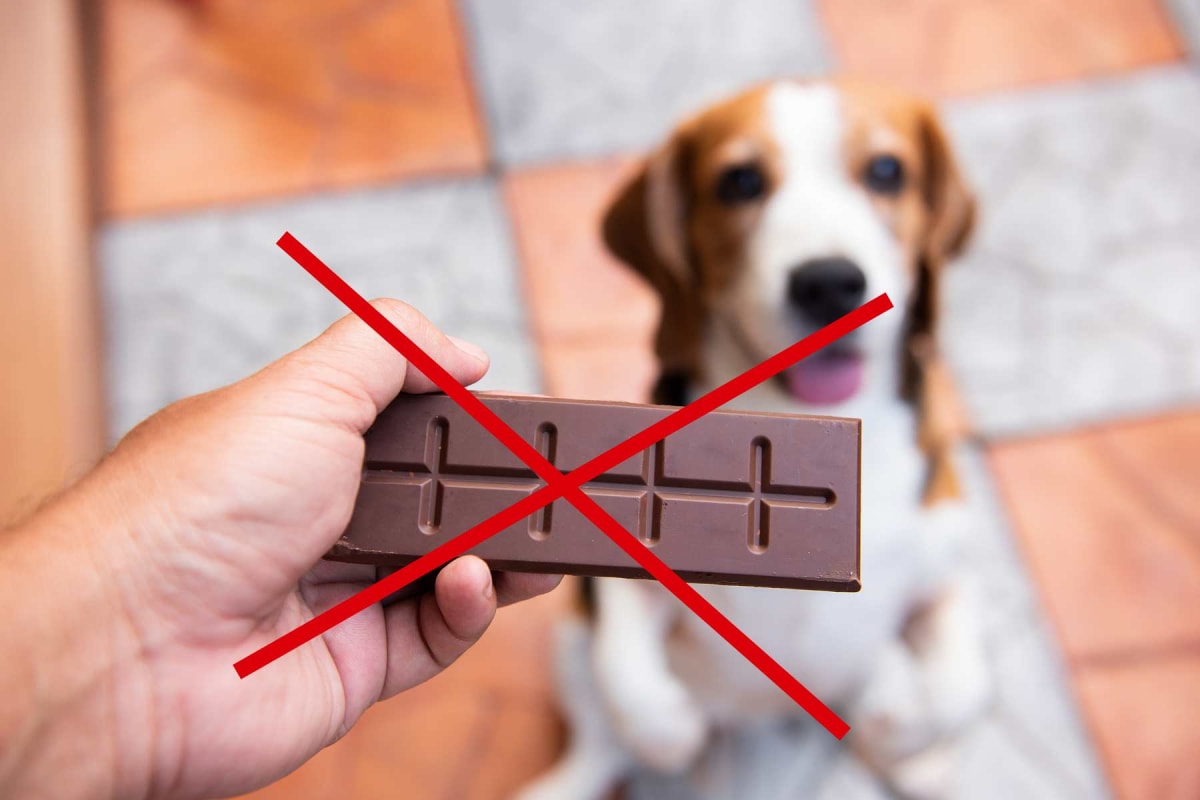
Can dogs eat chocolate?
Can dogs eat chocolate?
Can dogs have chocolate?
The short answer is no, dogs can't eat chocolate. As a dog owner, you've likely heard that chocolate is dangerous for dogs. But why exactly is this sweet treat off-limits for our furry friends? Let's dive into the details of why chocolate is toxic to dogs, what to do if your pup accidentally ingests some, and how to keep your four-legged companion safe.
Why can't dogs eat chocolate?
The main reason dogs can't eat chocolate is due to two toxic components: theobromine and caffeine. These substances, which are easily metabolized by humans, pose a significant threat to dogs because their bodies process them much more slowly.
Theobromine, in particular, is the primary culprit. It's a stimulant that affects the central nervous system and cardiovascular system in dogs. As it builds up in their system, it can cause various harmful effects, from mild discomfort to life-threatening conditions.
Other toxic ingredients
Beyond theobromine and caffeine, chocolate often contains other harmful ingredients and foods toxic to dogs:
Sugar: High amounts can lead to obesity and dental problems.
Fat: Excessive fat intake may cause pancreatitis, a painful and potentially serious inflammation of the pancreas.
Xylitol: Some chocolates contain this artificial sweetener, which is extremely toxic to dogs even in tiny amounts.
Nuts & raisins: Raisins and certain nuts, like macadamia nuts, are extremely dangerous for dogs.
Signs of chocolate poisoning in dogs
If your dog has eaten chocolate, you might notice symptoms within 6 to 12 hours. Early signs include:
Vomiting or diarrhea
Increased thirst
Restlessness or hyperactivity
Rapid breathing
Increased urination
As poisoning progresses, more severe symptoms may develop:
Muscle tremors or seizures
Irregular or rapid heartbeat
High temperature
Rigid muscles
Collapse
How much chocolate can a dog eat before getting sick?
As a general rule, no amount of chocolate is safe for dogs. Even a small piece of dark chocolate can be potentially lethal for a small dog.
The toxicity of chocolate depends on several factors, including:
Type of chocolate: Darker chocolates are more dangerous due to higher theobromine content.
Amount consumed: Even small amounts can be harmful, especially for smaller dogs.
Dog's size and weight: Larger dogs may tolerate slightly more than smaller ones.
How do veterinarians treat chocolate toxicity?
Treatment for chocolate toxicity depends on how recently the chocolate was consumed and the severity of symptoms. If caught early (within 1 to 2 hours), vets may induce vomiting to remove the undigested chocolate. They may also administer activated charcoal to prevent further absorption.
For more severe cases, treatments may include IV fluids to help flush toxins and prevent dehydration, medications to control heart rate and seizures, respiratory support, and extended hospitalization for continuous monitoring of the heart.
What to do if your dog eats chocolate
If you discover your dog has eaten chocolate, act quickly:
Determine what type and how much chocolate was consumed.
Contact your veterinarian or a pet poison hotline immediately.
ASPCA Animal Poison Control Center hotline: 888-426-4435
Pet Poison Helpline: 855-764-7661
Be prepared to provide your dog's weight and details about the chocolate consumed.
Do not induce vomiting without professional guidance.
Remember, symptoms may not appear immediately, but treatment is most effective when started early. Don't wait for symptoms to appear before seeking help.
Can dogs eat white chocolate?
While white chocolate contains very little theobromine compared to dark varieties, it's still not safe for dogs. White chocolate is high in fat and sugar, which can cause pancreatitis and contribute to obesity. It's best to avoid giving your dog any type of chocolate, including white chocolate.
Can dogs eat carob?
Yes, carob is a safe chocolate alternative for dogs. This dog-friendly treat looks like chocolate but doesn't contain theobromine or caffeine, making it non-toxic to dogs. Many pet stores sell carob-based treats specifically made for dogs. These provide a safe way to treat your pup without the dangers associated with chocolate.
Always check ingredients, as some products may mix carob with other ingredients that aren't good for dogs.
How to prevent chocolate poisoning in dogs
Prevention is always better than treatment. Here are some tips to keep your dog safe:
Store all chocolate products in closed cabinets out of your dog's reach.
Educate all family members, especially children, about the dangers of sharing chocolate with pets.
Be especially vigilant during holidays when chocolate is abundant.
Use secure trash cans that dogs cannot access.
Consider crate training or using baby gates to restrict access to kitchen areas.
Train your dog with the "leave it" command for times when they may find something potentially harmful on the ground.
Remember, your dog relies on you to make safe choices for them. By keeping chocolate and other toxic foods away from your pet, you're helping to ensure they live a long, healthy life by your side.
